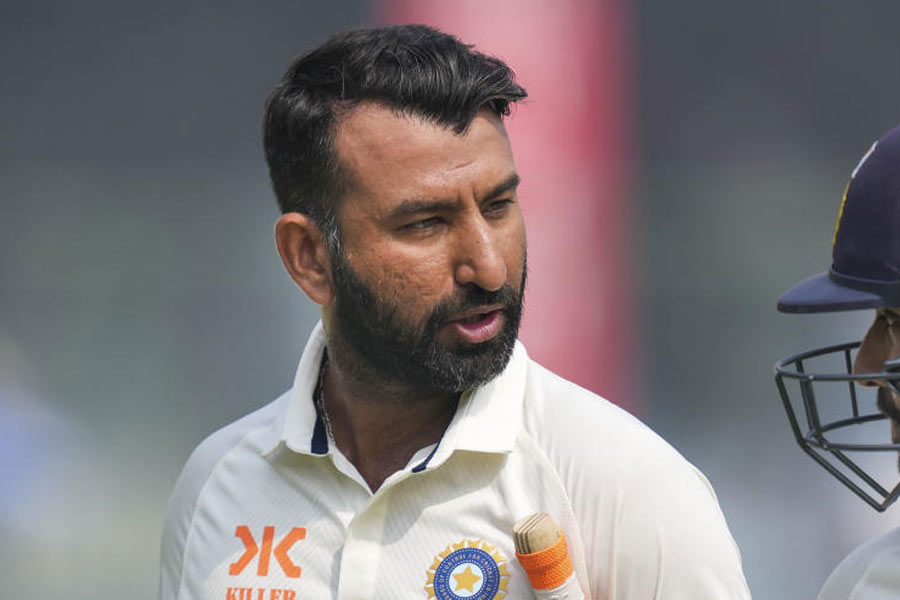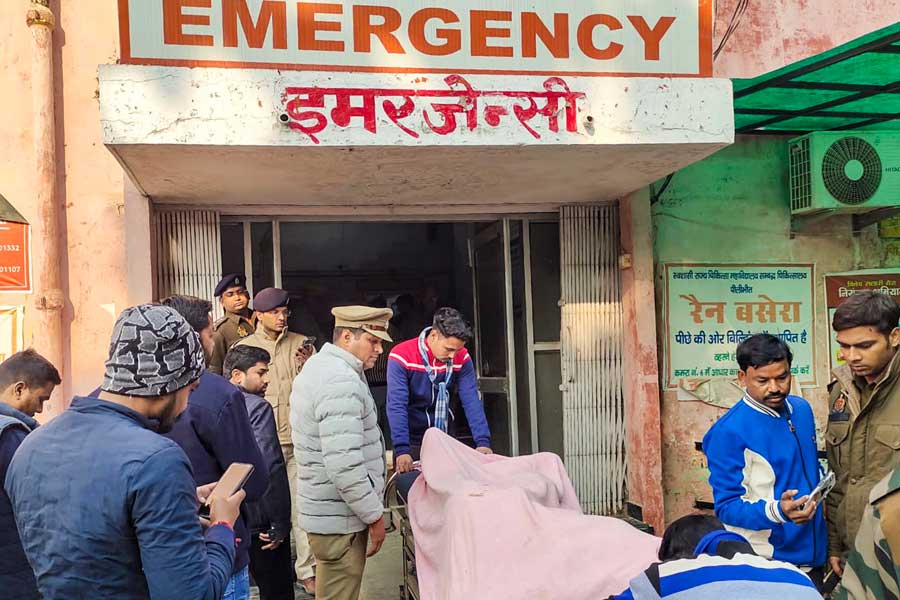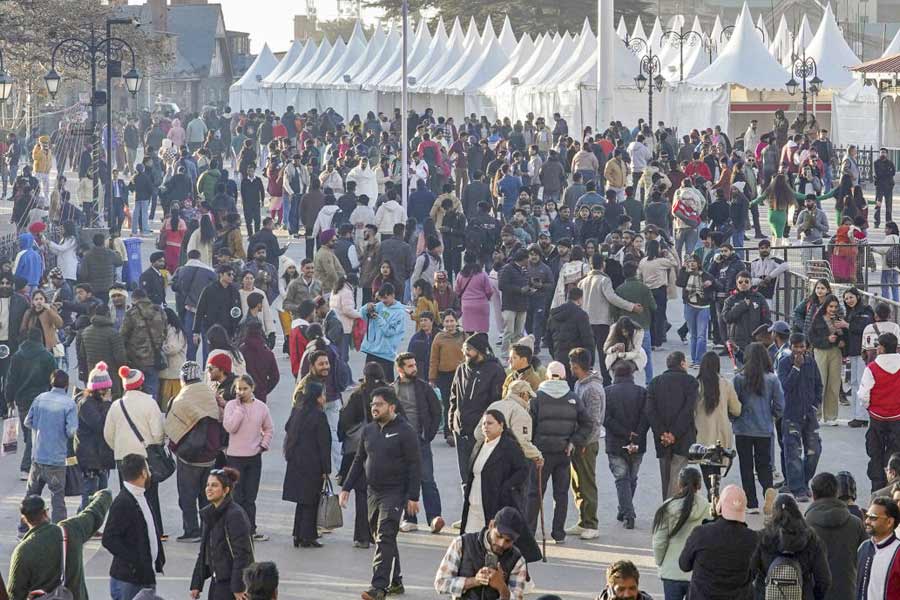Calcutta still has many brick-and-mortar shops that are over a century old and more. Some of them thrive, others barely exist in a vastly altered economy. In the book Heritage Retailers of Calcutta, 1785 to 1950, published with the support of Intach, Ashish J. Sanyal writes how modern organised retailing in the city was started by the British after 1857. Large departmental stores such as the Army Navy Stores, Hall and Anderson, and Whiteaway, Laidlaw & Co. located along Chowringhee catered to the European, British and affluent Indian clientele. Sanyal writes, “In comparison, the Indian retailers started off small, mostly from north Calcutta, particularly the Burrabazar area and then moved south to Dalhousie, Chowringhee, New Market, Park Street and then even further south to Bhowanipore, Hazra Road, Ballygunge.”
New Moradabadi Shop on Tarachand Dutta Street
It was founded in 1884 by Fazal Elahi, who belonged to the Punjabi Muslim community of Delhi, and is now run by his descendant Khurshid Akhter. The shop sells hookahs, handis, lamps, meat-mincing machines, a gleaming amalgamation of all things brass, copper and metal. Akhter says, “Elahi had established other shops in Calcutta, including one in Bagri Market that sold socks.” In the early days, business was brisk and the New Moradabadi Shop — which is right opposite Royal Hotel — was the place to buy handis for biryanis. Today, however, it is known more for the ornate brass hookahs than anything else. The New Moradabadi Shop is on YouTube and do courier products to customers to counter the threat of e-commerce.
Nalin Chandra Das & Sons in Natun Bazar
It was right here that Johuree Lall Das made his first batch of mondas — hand-made chhena-based sweets — in 1841. As the current proprietor Tapan Kumar Das tells it, Johuree was forced to leave Dubrajhat village in Burdwan. “The British were forcing villagers to get into indigo cultivation. My ancestor fled to Calcutta. Ours was a family of sweet-makers, so he started making mondas and selling them at Howrah Station.” The story goes that barrister Biswajit Ghosh of Pathuriaghata got some cocoa powder from one of his trips to England. He gave it to Johuree and asked him to make sandesh with it. Johuree refused. Says Das, “But when Ghosh told him he would buy the entire batch, he agreed.” To date, the shop sells chocolate sandesh alongside the legacy monda and other sweets.
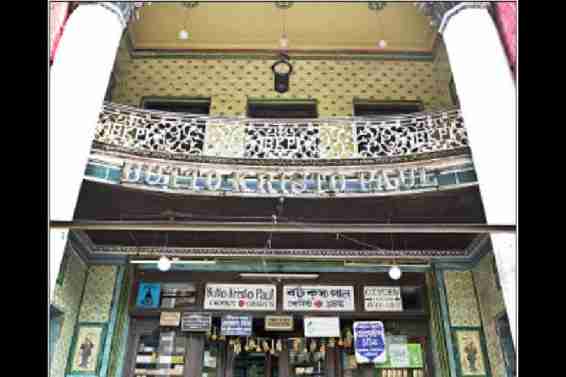
debajyoti sarkar
Butto Kristo Paul on Sovabazar Street
Oxygen and Edward’s Tonic are available here, reads the signage on the glass and wood door. Chandrima Paul, the fifth-generation owner, tells the backstory of Edward’s Tonic. Butto Krishto Paul of Shibpur worked at an ayurveda shop owned by his uncle. One day, Edward Gower Stanley, undersecretary to the Government of India, forgot his bag full of money at the shop. Butto Krishto ran after him and returned it. The impressed sahib gave him the formula of his anti-malarial tonic. Soon Butto Krishto was making and selling the tonic. It became so popular that it came to be known as the Battis Bimari Ki Dawai and he went on to establish this shop in 1858. According to Chandrima, during the pandemic, people came looking for this tonic, convinced it could cure Covid-19 too.
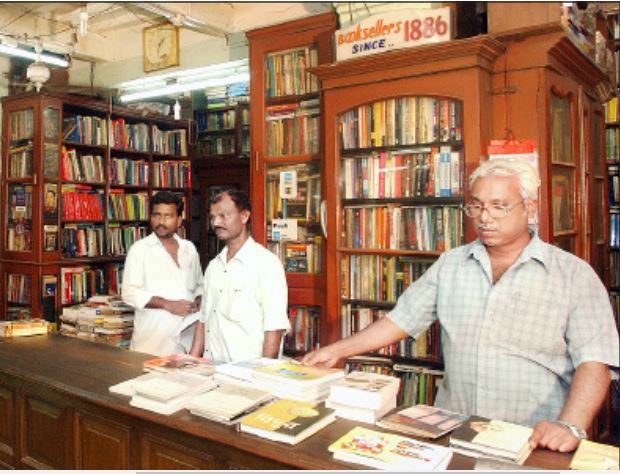
tapan das
Das Gupta & Co. Pvt. Ltd on College Street
In 1884, Girish Chandra Dasgupta and his friend Mahesh Bhattacharjee arrived in Calcutta from Jessore after matriculation. Girish opened a bookshop and Mahesh started a homeopathy shop, both on College Street. Those days, there were about 100 shops in boi para. The other competing book cluster was Bottala. Girish concentrated on English language books. He also began importing books. In the late 1800s, he published physics and chemistry texts in Bengali. He also brought out books on religion and food — he published a book called Chheleder Tiffin among others. The shop has seen better days but the current proprietor Arabinda Dasgupta is hopeful. He says, “If this shop has survived two world wars, the Naxal movement, load-shedding and whatnot, it will continue to survive in the future.”

pradip sanyal
Ruth & Co. Pvt. Ltd in BBD Bagh East
In the mayhem of BBD Bagh, it is near impossible to spot Ruth & Co. Between one bubbling cauldron of tea and another of steaming rice on the narrow sidewalk, one has to cut through the stream of pedestrians to reach it. Peary Mohan Soor (now Sur) started a shop in Radhabazar, where he sold scientific instruments, paper, survey instruments... This was 1848. Later, he shifted to BBD Bagh East. His aim was to sell instruments to British construction companies such as Martin Burn and to the British government. The name of the shop — Ruth is a Biblical character — was carefully chosen. Peary Mohan wanted to impress his British clientele not only by giving his shop an English name, he also employed an English-speaking sales force, says Somnath, the fifth generation Sur who runs the shop today along with his son Soumyajit.
J.S. Mohamedally in Chowringhee
The Mohamedally family belongs to the Dawoodi Bohra community and was advised by their spiritual leader Dai-al Mutlaq Sydena to move to Calcutta from Gujarat to start their business. Jeewajee Sheikh came to Calcutta in 1908 and opened his first shop in 1909 on Armenian Street, which later shifted to Radhabazar and thereafter to Chowringhee. Says Hassan Sheikh Esmail Bhai, a fourth-generation member of the family, “Textile remains our business, we used to sell imported textiles from British mills and later switched to cloth from Indian mills during the Swadeshi movement. Today, we have imported stuff alongside desi material.” The large 2,000-square-feet shop is a busy, busy space.


